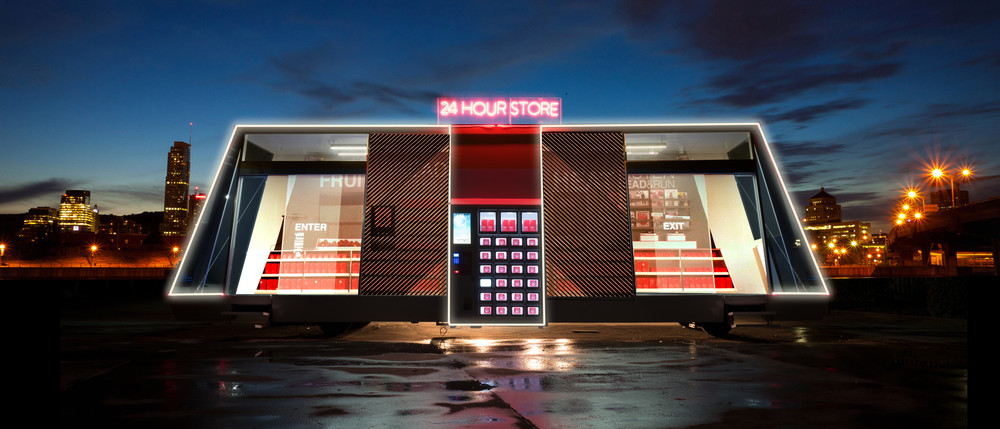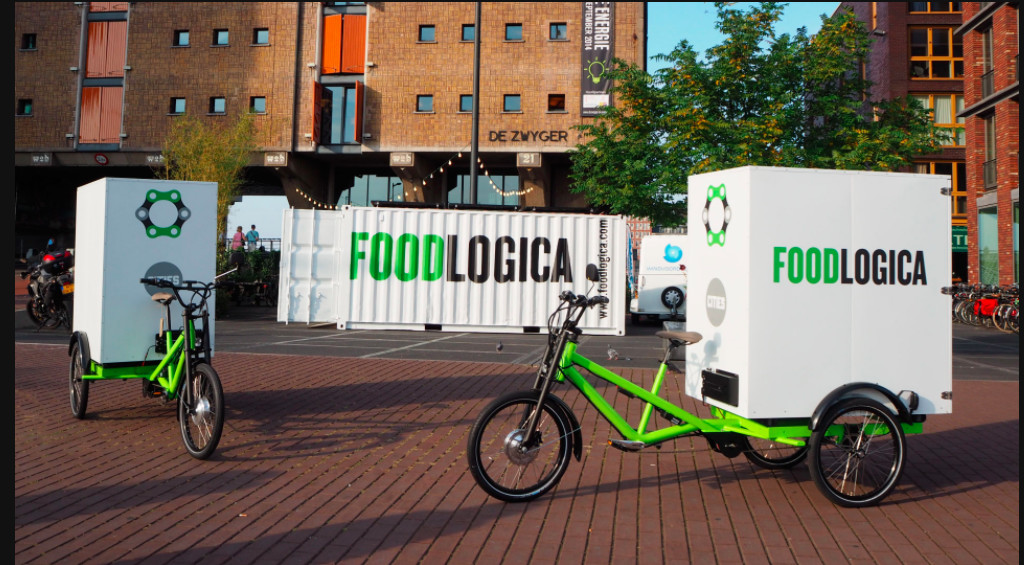If you are striving for retail excellence, don’t worry about tech trends but focus instead on emerging consumer demands. Technology merely is a means to meet evolving expectations, helping you give your clients what they want, where they want it and how they want it. Here are the top consumer trends that will continue to shape retail in 2018 and the innovations and technology that will keep you competitive in this market.
Convenience
Convenience has always driven shoppers, but this has come to mean something very different in the new generation. We all have busy lives, limited budgets and high expectations. But today, we are spoiled by our smartphones, our apps and are used to instant gratification. So what gives in the day of Amazon? Google Home to keep you sane by managing your grocery list? Yes, please! Restocking your kitchen via smart e-commerce that forecasts your demands, saving you precious time? Absolutely! Apps such as ShopSavvy to get you the best price? Bring it on! Smart technology and e-commerce will become a routine part of shopping even for those who are least technologically inclined.
Whether people use technology to fulfill their staples or to satisfy their appetite for local/organic/unique items, smart shopping is going to become part of our day-to-day lives.
While the Amazons and Walmarts are daunting giants for most retailers, smart shopping will become everyone’s saviour thanks to the accessibility of technology, along with the help of the gig economy to execute on creative and affordable delivery options. Whether it’s UberEats or Instacart, combining an app with an efficient delivery mechanism and you are set to satisfy your convenience-seeking millennials and more. Efficient mobile sites that use data science and machine learning are the other essential elements of catering to this demanding generation of shoppers: online personalized shopping experiences, with door-to-door delivery and click & collect options are essential elements of retail today. And this is not restricted to food-related retail. Shoppers today simply expect the convenience of delivery, and shipping options that can accommodate the needs of any size of retailer abound in today’s market. Check out this blog post by Shopify on how to choose your shipping strategy. Inventory and order management software such as Tradegecko can help any size of business manage sales, inventory, accounting, shipping and customer data.
Offering convenience is not just restricted to e-commerce though. Outside the box thinking that caters to your unique customer needs will go a long way to keeping you in the game. Take the example of Dutch grocery chain Albert Heijn – they are piloting a new cashless shopping system at its AH To Go stores with a ‘tap, grab and go’system that involves in-store electronic shelf labels that customers can scan with an Albert Heijn card and pay through an app on their mobile device. Amazon Go is beta testing a similar concept in a grab and go cashier-free store (currently only open to their employees) in Seattle. For the busy professional grabbing a few things on their way home from work, it doesn’t get more convenient than that. Or does it?

For a truly futuristic experience check out Moby Mart, a 24/7 concept store that is piloting in Shanghai, which is a humanless, cashless, seamless shopping experience. Download their app and use your phone to open the store doors. An AI driven hologram greets you. You scan the items you want to buy, and when you are done, instead of waiting in line or fuddling around with a self-check-out counter, the store charges your card once you leave the store. The tiny self-driving store will restock itself with fresh items and you can even pre-order products that are not usually stocked and pick them up in store when you visit next time.
Choice
 We are spoiled by the convenience of online shopping and home delivery but we are also social creatures. Bring in seamless multi-channel offerings: while we are loving our Amazon moment, most of us seem to crave still the human experience of shopping where we feel, touch and experience things. Mobile shopping apps, efficient mobile sites, and data-driven store experiences that focus on us are key to delivering customer experiences that are seamless across all touch points. We may “window-shop” online and then go and pick the item up in a store to make sure it fits right. Or vice versa – try things on, enjoy an in-store experience but then order online at your convenience and have it delivered to your door.
We are spoiled by the convenience of online shopping and home delivery but we are also social creatures. Bring in seamless multi-channel offerings: while we are loving our Amazon moment, most of us seem to crave still the human experience of shopping where we feel, touch and experience things. Mobile shopping apps, efficient mobile sites, and data-driven store experiences that focus on us are key to delivering customer experiences that are seamless across all touch points. We may “window-shop” online and then go and pick the item up in a store to make sure it fits right. Or vice versa – try things on, enjoy an in-store experience but then order online at your convenience and have it delivered to your door.
While the growth in online-only offerings is undeniable, many successful digital-first brands are seeking out a physical presence as well. According to McKinsey & Company, in 2020 80% of US retail sales will still happen in brick-and-mortar stores. This number may be even higher in Europe.
ModCloth, an online retailer of indie and vintage-inspired women’s clothing, experimented with a number of pop-ups across the country and finally opened a concept store in Austin where women can shop a rotating selection of merchandise and book a one-on-one with a Modstylist. If you are not in Austin, you can book one online! Bonobos, a digital-first men’s clothing company, is another example where they felt the need for a physical presence despite a loyal online following. They have gone all out and have “Guideshops” across the country where customers get individual attention and fitting but receive their merchandise in the mail after, much like they do with online shopping. Some digital-first brands like Honest have gone into partnerships with brands like Target – while avoiding the direct cost and hassle of owning a physical location, they have expanded their personal reach to their online clients.
Physical stores offer digital brands an opportunity to create a more personal touch, offer unique experiences to digital generations while increasing conversion rates and brand loyalty. Whether it’s Amazon with their kiosks or Google with their pop-up stores, digital is going physical and not just the other way around. Delivering a real omnichannel offering focused on choice is key to succeeding in today’s retail race.
Retail experiences (versus selling things)
To succeed in today’s retail environment, bricks and mortar stores will have to do more than just offer merchandise for customers to purchase. People can do so online, and many prefer the convenience of shopping from home. To compete, successful brands are shifting to experience based offerings, and this trend is going to continue to grow. Retailers need to use their physical presence to woo their customers through unique, pampering and innovative experiences. Recruiting the right talent will go a long way to get you on the right path: in-store influencers and brand experts provide personalized high-touch experiences versus store clerks or sales associates who merely serve up a product and charge your card.
Customer-centric brands are seizing the opportunity to engage their customers in new and unique ways. Take the example of Nordstrom: its new concept store Nordstrom Local is a small boutique format that is a refreshing departure from their busy department stores. It offers no in-store inventory but instead provides in-store services: The bar offers you beverages, even wine, to pamper you while you get custom alterations done or pick-up/return your online purchases; personal stylists provide image consulting while you get a manicure. They even offer a bespoke tailoring service, Trunk, where you can get a custom outfit made. Nordstrom Local aspires to be a reflection of the retail giant’s vision: “to serve customers better, to always be relevant in their lives and to form lifelong relationships.” Local will serve experiences that customers can translate into purchases through their desired channels – online or in-store.
These types of creative approaches to engaging customers also offer retailers the opportunity to supplement their online data with qualitative personal information – taste, style etc. – that they can collect in-store. A proliferation of AR/VR type store enhancements will further enhance retail’s capacity to receive personalized data. For example, Oak Mirror is an interactive, touch-screen mirror that empowers shoppers to customize their fitting room’s ambiance, explore product recommendations and digitally seek assistance from store associates. A fantastic experience for the shopper and a great tool for retailers to gain a deeper understanding of their individual clients’ profiles, allowing personalization that will drive customer satisfaction and brand loyalty.
Hyperlocalism
While there are different explanations for the rise in hyperlocalism, including suspicion around product claims from far-far away, I believe that one of the key drivers is our very human need for belonging. As technology has taken over so much of our lives and much of retail has gone online, we are craving a connection to community and seeking relevance of products and services to our day to day lives.

Artisanal, craft-style local brands help fulfill this human connectedness need as they give us the feeling that we are close to the producers and hence can trust them. Local – whether right or wrong – makes us believe the products are real, fresh, unique and “ours.” This year, “pop-up” and limited time offerings that offer unique experiences and connect us to our communities or even to our “global villages” will continue to gain prominence.
While not only built around local products, New York’s famed STORY is a retail concept that “takes the point of view of a magazine, changes like a gallery and sells things like a store”. Every four to eight weeks, STORY delights its customers with a new theme, trend or issue giving their customers a pop-up experience in a permanent location.
But big brands can tag on to the local movement as well. Take the example of Whole Foods: they proclaim that they love local and how buying local ensures a strong future for local products. Whole Foods has a dedicated team of local “foragers” to find the best locally grown, raised and produced items to feature at each of their local stores. Tech trend to watch? Blockchain that will simplify contracting and therefore allow more micro-brands to shine through large retail chains.
Ethical consumerism

As our purchasing power and the scope of our retail reach grows so does our concern around what is in our food, who made our clothes and how it came to us. In Amsterdam, FOODLOGICA links local food, consumers and businesses through bike transport that reduces emissions, congestion and pollution. These are solar-powered tricycles with a capacity to pull 300 kg of fresh food from local producers to end users such as restaurants and food retailers, addressing the consumer push for local, ethical and convenient. Expect more of this type of innovation in 2018.
Transparency is another essential element in catering to ethical consumers. A study from Response Media found that almost all consumers reported that transparency in food was important to them (99% for fresh food and 98% for packaged food) with 70% saying that their purchases are always or often influenced by transparency. More than nine out of 10 said transparency in ingredients, their sources, as well as production and manufacturing processes, shipping and handling, and sustainability efforts, are important to them. Those who embrace radical transparency will win in 2018 and beyond, particularly in food and grocery.
The Bottom Line
Technology will continue to help innovative retailers satisfy their customers and succeed in 2018. Data-driven solutions to address increasing consumer demand for convenience, time-saving and personalization are essential elements of a successful retail strategy. Just as retailers have been doing online, there are data-driven opportunities in physical stores as well. Whether it is in-store heat mapping to optimize design, merchandising and staffing, or AR/VR assisted in-store experiences to get to know your clients better – data analytics-driven products can help engage your shoppers with timely, relevant, value-added interactions. AI can deliver better personalized experiences that leave customers feeling special and connected. Blockchain can simplify contracting, allowing more local and micro brands on the market and also create product transparency. Innovative delivery methods, some relying on the gig economy, will address one-off as well as regular shopping needs. The shift toward subscription models will also continue; whether it is for curated experiences such as Fabfitfun or local organic conveniences such as Mama Earth Organics or even office staples such as printer ink, subscriptions make our lives easier and provide steady revenue streams for retailers.
Customer-centric retailers who engage and delight their clients through innovation and personalization will continue to win in 2018.
